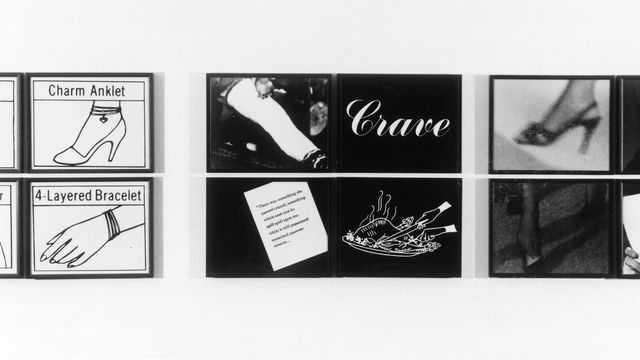
Silvia Kolbowski
While studying art at Hunter College in the late 1970s, Silvia Kolbowski turned to the mediums, formats, and strategies of conceptual art to address topics then typically elided by its practitioners and historians—namely, sexuality and difference. Like a number of feminist artists in the 1980s, Kolbowski used appropriation and photography to launch a psychoanalytically informed critique of representation, especially the mass media's construction of women for the pleasure of the male gaze.# Beginning in the late 1980s, Kolbowski extended her analysis of display, consumption, and power to address institutions of art, especially the formats and spectatorial experiences by which art objects accrue value. Her recent work, in fruitful dialogue with history and the current moment, continues to explore political, psychic, and ethical issues and anxieties.
Model Pleasure, Kolbowski's first major series, consists of rephotographed details from fashion magazines, instructional diagrams, and advertisements as well as texts written by the artist. They are displayed in a serial or grid format, which metonymically links the different images in a chain of fetishistic desire and commodification.# Model Pleasure III (1983) presents fragments of the female body adorned with jewelry and high heels. Interspersed with these illustrations and photographs of necks, wrists, and feet are the word crave in cursive script, a line drawing of the carving of a roast turkey, and a text with the words cost, spill, and remaimed crossed out and replaced with cast, spell, and remained, respectively. These juxtapositions allude to the violence, pleasure, and embedded ideologies of power and sexuality that structure representation. In Model Pleasure, Kolbowski draws on the techniques of appropriation and montage as well as aspects of psychoanalytic, linguistic, and feminist theory to critique the representation of femininity.

Through the combination of the boys' symbols of power and the men's descriptions of men in power, the installation traces the maturation, expression, and psychological dimensions of traits such as physical prowess and violence and emotions such as fear, which bind power and masculinity, leading nations into unjust wars. Throughout her career Kolbowski has sought relentlessly to expose this bond and to loosen its grip on representation, culture, and politics.
—Ruth Erickson


